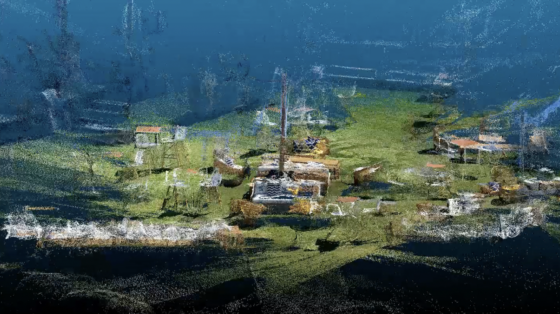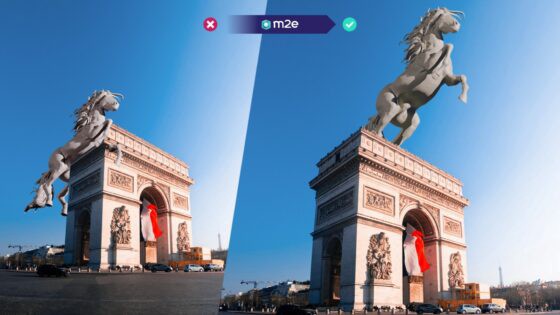When we think about the future of AR, we imagine an augmented world with contextualized 3D experiences that seamlessly merge with the physical world: augmented buildings with AR navigation systems, virtual avatars telling us about products, services, and locations, works of art transforming the world around us, augmented shop windows, engaging games and much more… But where are all of these use exceptional cases? Why don’t we see any actual examples of those?
The answer is simple: geolocalization accuracy.
To augment the world, we need a system to precisely locate the observer in space.
None of the most incredible applications of AR can be built using GPS only. Such a system is inaccurate outdoors and does not work at all indoors. That’s why we made map2earn, a system to re-locate you in space precisely using computer vision that goes far beyond what can be achieved with GPS only. Such a system will enable the creation of the AR use cases that, so far, we could only dream about.
But how does it works? The OVER mapping system empowers each user with a smartphone (no Lidar needed) to become a mapper; all it takes is five minutes of filming per OVRLand — 300 sqm -. The whole process is aided by an intuitive UX that guides through the capture. The mapper will generate three main assets: a 3D point cloud of the location, relocalization algorithms with 20 cm accuracy, and a Nerf-generated digital twin of the mapped area, all represented by an NFT he will own.
Let’s dig in on those elements:
- The 3D point cloud will empower the creator with a precise visual reference of the actual 3D structure of the location that he wants to augment with the AR experience.

- The computer vision algorithms will then leverage the point cloud to locate the observer of the AR experience in space and deliver him a coherent experience.

- The Digital Twin: thanks to the latest computer vision algorithms (NeRF: neural radiance fields), it’s possible to recreate a simulation, a neural hallucination, of the mapped location. The current output is a spectacular virtual drone fly-through of the place, but soon we will make the location freely explorable, including the localized AR experience. With such a system, OVER is blurring the borders between AR and VR, making the geolocalized AR contents even remotely explorable.
But that’s not all; the mapper, providing the raw data to generate the point cloud and the digital twin of the location, will own these digital assets in the form of NFTs. The vision is to create a Web3-based, community-owned, up-to-date 3D map of the world’s most significant indoor and outdoor locations. But how important are those data? Such a 3D map has yet to be built, so we have no direct references for it, yet Google Maps can give us some hints: with their service, they generate 1 billion monthly active users.
What if you could own part of those data? What if you could generate those data, contributing to the portal creation of the AR metaverse?
Map2earn objective is not to rebuild google maps but to create the most extensive web3-based, 3D map of important locations in the world, indoor and outdoor places visited by humans with a smartphone instead of cars and satellites. Those OVRMaps have a fundamental importance for AR; they’re the portal to the AR metaverse, and without those, there is no way to reliably and coherently augment the physical world.
But what about the ‘earn’ part of the system? This first beta release will only enable the creation of the maps, the neural renders, and usage for relocalization. With the production release of map2earn scheduled for late January, the created maps will be mintable as NFTs, freely tradable on the OVER marketplace and other decentralized marketplaces such as OpenSea. Finally, we will start a direct incentivization program for the mapping activity by enabling open-to-buy orders to acquire maps in the most important locations worldwide.


All Comments